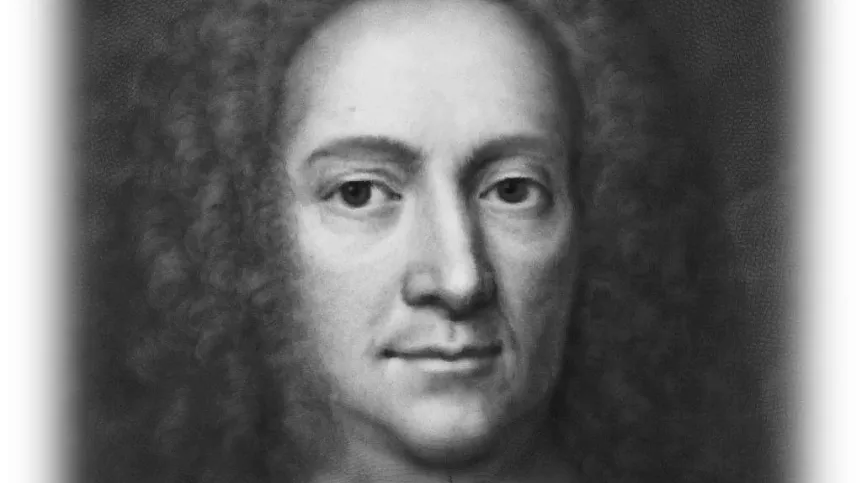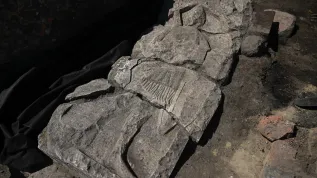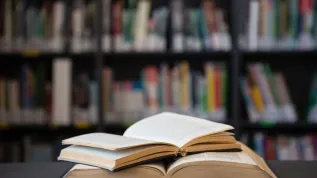
Scientists at Gdańsk University of Technology created an image of physicist Daniel Gabriel Fahrenheit, born in the late seventeenth century in Gdańsk. The achievement was possible with a genetic algorithm, and a specially designed computer application.
No portrait of the scholar has survived to the present time. All images of the inventor of the of Anglo-Saxon system of measuring temperature you can find on the internet are fakes. Based on mortis inventory we only know how Fahrenheit used to dress. He wore a wig, coat and vest.
The project was developed by Tomasz Ziółkowski and Dr. Jerzy Proficz from the Academic Computer Centre TASK of Gdańsk University of Technology under the supervision of Prof. Henryk Krawczyk, director of the Department of Computer Architecture and rector of the university.
"Our application allows to create virtual portraits of people, whose appearance is unknown. Using existing historical data, such as portraits of relatives or descriptions, our genetic algorithm shows virtual images that are likely to resemble the person in question"- said Prof. Krawczyk.
Gdańsk University of Technology rector emphasised out that the current level of scientific development does not allow to develop an exact method of facial reconstruction. "Our solution, however, gives an idea of what the person could look like" - he noted.
To create a virtual portrait of Fahrenheit, scientists used images of relatives and contemporary residents of Gdańsk of similar origin and social status: patricians, scholars and clergy. Materials were made available by the Library of the Polish Academy of Sciences and the National Museum in Gdańsk.
The algorithm designed at Gdańsk University of Technology belongs to the family of so-called genetic algorithms. The idea is to search for the optimal solution through a process inspired by the theory of evolution. The algorithm creates a number of potential solutions, for which it periodically carries out crossing procedures.
In this case, operations include modifying visual features of the face, using morphing technique, known for from computer animation, and a transformation model.
Best of all the generated solutions are selected on the basis of corresponding values of the so-called adjustment function.
In the case of the algorithm developed at Gdańsk University of Technology the adjustment function uses eigenfaces algorithm (used in computer facial recognition), to compare the processed portraits.
In contrast to classic genetic algorithms, in the Gdańsk solution the adjustment function values are modified during runtime based on the new generated solutions.
"This is what makes this algorithm original, and it allows to achieve a better quality of the resulting images with a limited set of historical portraits" - said Tomasz Ziółkowski.
According to Krawczyk, The achievement of Gdańsk University of Technology researchers opens up new challenges. "We\'re trying to collaborate with geneticists whose research is directly related to similar topics. We want to determine the impact of genetics on the appearance of humans" - emphasised the rector.
Daniel Gabriel Fahrenheit was born in Gdańsk in 1686, in a family of German merchants. At the age of 15 years (after the death of his parents) he left Gdańsk and settled in the Netherlands, then in England, where he devoted himself to scientific work and, amongst others, became a member of the famous scientific British Royal Society. Fahrenheit visited Gdańsk on several occasions, including in 1710 and 1712. He died in The Hague in 1736.
Fahrenheit is known mainly for being the first to use mercury in a temperature measurement instrument (previously, alcohol was used), and creating a scale from zero to 212 degrees. On Fahrenheit\'s original scale the freezing point of brine was zero degrees, and 212 degrees F meant the temperature of boiling water.
Fahrenheit remains the official scale in English-speaking countries. Other parts of the world use Celsius developed in 1742 by Swedish physicist and astronomer Andreas Celsius.
PAP - Science and Scholarship in Poland
rop/ mlu/ jra/ mrt/
tr. RL
Fundacja PAP zezwala na bezpłatny przedruk artykułów z Serwisu Nauka w Polsce pod warunkiem mailowego poinformowania nas raz w miesiącu o fakcie korzystania z serwisu oraz podania źródła artykułu. W portalach i serwisach internetowych prosimy o zamieszczenie podlinkowanego adresu: Źródło: naukawpolsce.pl, a w czasopismach adnotacji: Źródło: Serwis Nauka w Polsce - naukawpolsce.pl. Powyższe zezwolenie nie dotyczy: informacji z kategorii "Świat" oraz wszelkich fotografii i materiałów wideo.













